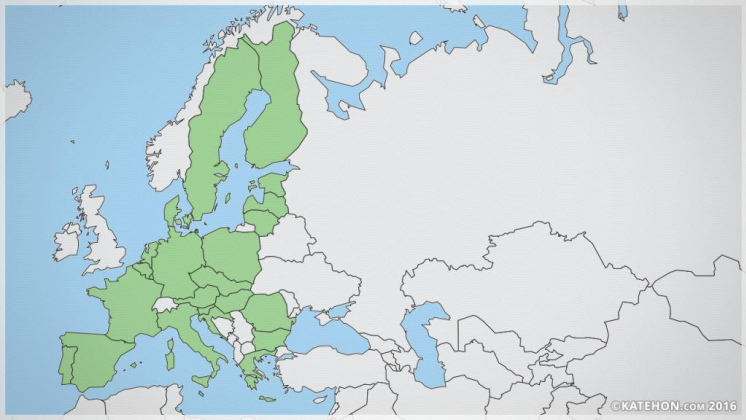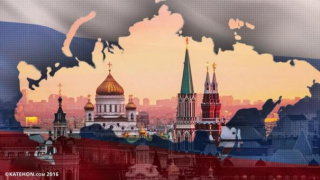2017 Forecast: EU
2016 is over, and it’s thus time to review the most significant events that occurred in each region and prognosticate how they may influence the coming year. The research is divided into 11 separate sections which will cover the entire world, with individual attention being given specifically to the EU, Mideast, Central Asia, South Asia, ASEAN, Northeast Asia, China, Russia, Africa, Latin America, and the US.
Each part will begin with a brief summary that sets the stage for analyzing the three main trends in the examined region, the aim of which is to provide a comprehensive overview of the most crucial developments which have occurred and are predicted to progressively unfold over the next 12 months. Finally, the last part will build off of the aforementioned research in concisely conveying the three most important global trends which can be observed all across the world.
For self-explanatory reasons related to time and space constraints, the work will of course be unable to touch upon each and every single event of significance which took place across the past year. Therefore, the reader should kindly understand that the following review and forecast is a curated list assembled as a result of the author’s intuitive judgement and in accordance with the interpretative geopolitical framework which he’s expounded upon in his works for Katehon and other media.
Summary
The continent’s internal divisions between Eurocautionaries and Totalitarians are firmly entrenched and will only be accentuated across the coming year, potentially leading to a geopolitical division of the EU between East & West and/or North & South. The bloc’s unity will be put to the test as it confronts emerging crises all across its periphery, ranging from the unresolved War on Donbass to Balkan revisionism and North African interlinked terrorist-immigrant invasions.
Eurocautionary Revolt
The term “Eurocautionary” is the author’s more palatable label for what the Mainstream Media has smeared as “Euroskeptics”, and this ideological movement has seen tremendous success across the last couple of years. Hungary’s Prime Minister Viktor Orban was the first real politician from this camp to enter into power, though he was soon thereafter followed by Poland’s “Gray Cardinal” Jaroslaw Kaczynski after his PiS party swept the country’s parliament last year and Slovakian Prime Minister Robert Fico’s re-election in early 2016. Brexit shocked the entire world when it was voted for over the summer, and then Italy’s political establishment was rocked by the failure of former Prime Minister Matteo Renzi’s centralization referendum. Although the Freedom Party was narrowly defeated during the second round redo of Austria’s presidential elections, they still command a lot of influence in the country and evidently have mass popular appeal.
Looking forward to 2017, France will face its ultimate moment of reckoning when Marine Le Pen faces off against Francois Fillon, as the firebrand female politician might realistically become the country’s next leader. Even if she doesn’t, then her opponent’s victory would still signify France’s decisive right-wing reorientation, as it’s extremely unlikely that the socialist challenger will win. Taken together, all of the domestic political events in the EU are indicative of a continental-wide Eurocautionary revolt, fuelled to a large extent by the manufactured Immigrant Crisis and the “Secular Wahhabis’” related Fifth Generational Warfare objective of Civilizational Aggression. The odd member out is Germany, which is the last remaining bastion of the New World Order’s “neoliberal” governing and economic systems. The chief objective of the Eurocautionaries is to replace the government in EU-leader Germany with a much more pragmatic and civilizationally reasonable one which would facilitate the continent’s internal, and perhaps even geopolitical, rearrangement.
Cross-Continental Divides
The rise of the Eurocautionaries portends a possibly imminent reorganization of the EU, though it’s uncertain exactly what this could look like in practice if it’s ever implemented. The author forecast a few of the most likely scenarios in his Duran piece about the “Post-Brexit EU: Between Regional Breakdown And Full-Blown Dictatorship”, which also mapped out some of the geopolitical changes that this could result in. The main idea is that the bloc is increasingly facing the inevitable choice of either clamping down on all existing “freedoms” and becoming a full-blown dictatorship in order to sustain its “unitary” totalitarianism, or that it must devolve by giving power back to its member-states’ national capitals and potentially opening up the Pandora’s Box of regionalization. The US stands to strategically benefit in either case, so it’s a moot point to discuss which of the two scenarios Washington would most prefer, but nevertheless, if the second one enters into effect (which is what Trump might favor due to his own ideological leanings), then it could lead to an interesting cross-continental divide between East & West and North & South.
To explain, what former Secretary of Defense Donald Rumsfeld once unforgettably referred to as “New Europe” is by and large much more Eurocautionary than its western “Old European” counterparts, so there’s the very real prospect that it might be the former communist countries of Poland, Hungary, Slovakia, and possibly even a few others which lead the way in pushing through the bloc’s comprehensive reform. If for whatever reason France doesn’t join in on this process, such as if its prospective right-wing president ends up being as much of an anti-establishment fraud as Greece’s left-wing Syriza one proved itself to be, then the East-West divide between “New” and “Old” Europe would be greatly accentuated. Likewise, if France does in fact shift to the anti-establishment right and decisively moves forward with Eurocautionary reforms in the EU, this might put it at loggerheads with neoliberal Germany, with the two European leaders quickly dividing the continent up into ideological spheres of influence between themselves. In this scenario, France would team up with Eastern and Southern Europe, whereas Germany would remain dominant in the Central and Northern (Scandinavian) parts of the EU.
Peripheral Dangers
The EU’s domestic difficulties are ominously occurring at a time of heightened peripheral danger in the East, Southeast, and Southern fringes of the bloc. To begin with the first one, this is Kiev’s US-backed War on Donbass, which always has the potential to reignite into an all-out hot conflict. The consequences of this eventuality could be that the continuation war is played “for keeps”, meaning that both sides fight to totally destroy the other once and for all. There’s no telling if this would happen or if it would be a geographically limited conflict like the previous two rounds of violence, but in the case that it quickly spirals out of control, the EU would immediately regret recently giving Ukrainians visa-free access to the bloc because its eastern members could quickly become overwhelmed with refugees and far-right Nazi infiltrators if the tide of war turns against Kiev. This might lead to unilateral actions by the Eurocautionary governments of Poland, Slovakia, and Hungary to shut their borders with Ukraine just as the latter one did vis-à-vis Serbia as a result of the first Immigrant Crisis, thereby intensifying the East-West intra-organizational split with the neoliberal totalitarians in Brussels and Berlin.
The next forecasted crisis is actually a series thereof which could consequently erupt in a chain reaction all across the Balkans. The author thoroughly studied these scenarios in his Hybrid War research at Oriental Review, but they boil down to American-backed geopolitical revisionist projects targeting Republika Srpska, Serbia, and the Republic of Macedonia, otherwise categorized as the Central Balkans. NATO-member Croatia has been experiencing a revival of Nazi-era Ustasha ideology over the past couple of years, which dangerously threatens to upset the peace between itself and Serbia, to say nothing of the dysfunctional arrangement in the shared adjacent state of Bosnia. The latter country’s “central” government in Sarajevo is working closely with the US and Croatia in order to begin the unconstitutional process of dismantling Republika Srpska’s autonomy, and the influx of returning Daesh fighters into the country could prove to be the unpredictable trigger for sparking a renewed civil war in the country, albeit one which would once again result in NATO (US-Croatian) and Gulf interventionism. Relatedly, the Republic of Macedonia is threateningly menaced by the revival of the Nazi-era geopolitical zombie of “Greater Albania”, which could also consume parts of Montenegro and Serbia. Interestingly, these two interlinked scenarios have been lobbied for by the influential Council on Foreign Relations.
Finally, the last possible peripheral crisis poised to upend the stability of the EU is the danger that North Africa might once again turn into an exporter of large-scale terrorism and illegal immigration. The region is already in a dire and tense position due to the disastrous aftermath of the NATO War on Libya, which has seen the once-prosperous country turn into a literal hellhole dominated by terrorist and human-trafficking militias. The centrally positioned North African state is already an exporter of human suffering to the EU, whether of the terrorist and/or illegal immigrant (popularly disguised in the Mainstream Media as mostly being “refugees”) variety, but its role and that of its neighbors could increase exponentially in the event that Libya’s violence spills across its border. For example, Egypt is occasionally victimized by Muslim Brotherhood terrorism, while Algeria – despite being an impressively secure state given its unstable neighborhood and legacy of a decade-long Salafist civil war in the 1990s – could explode if its “deep state” (permanent military, intelligence, and diplomatic bureaucracies) doesn’t follow the Central Asian model of orderly political transition after the eventual death of ailing President Bouteflika. A second Salafist civil war in the densely populated coastal region of northern Algeria could automatically lead to a large-scale and uncontrollable outflow of millions of terrorists-immigrants (not necessarily one in the same, though occasionally so) into Western Europe and thus deal a near-instantaneous death blow to the EU.
Source: Katehon.com














